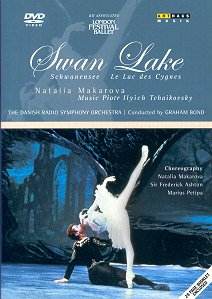Between 1871 and 1876 four major stage works
appeared in Europe, one each in Germany, Italy, France and Russia.
These works bear on each other in some remarkable ways. Each of
them has the same plot ó someone is being forced for reasons of
convention or patriotism to marry somebody they arenít in love
with. They arenít going for it, and the course of true love results
in most everybody being dead by end-curtain time. All four works
are today hailed as transcendent masterpieces in their forms,
but two of the four were failures in their first productions.
Three of the four works are set in the heroic past which tends
to give the theme a monumental, dare I say Biblical, dignity.
The other one was set in a foreign country, that is foreign to
the audience. In two of these works the hero has the same name.
This remarkable synchronised public assault by the artistic intelligentsia
from four different countries on conventional European marriage
customs eventually had its success in changing things around.
OK, has everybody got Aïda, Götterdämmerung,
Carmen ó and Swan Lake?
Perhaps, you say, Iím making too much of all
this. After all, Rossiniís Cambiale di Matrimonio of 1810
has a similar plot. Yes, but CdM was a comedy, nobody dies,
it was set in what was the present day, and it didnít, and wasnít
intended to, make audiences angry. And then Rossini turned around
and wrote La Gazza Ladra which has the opposite
message ó in troubled times trust in God and do what youíre told
and everything will come out all right.
* * *
Although I was sufficiently impressed to have
a very good time, some reviewers who have seen many notable performances
of Swan Lake tend to find this performance lacklustre.
Although in the earlier scenes there seems to be a lot of unaffected
walking about on stage, there is some exceptionally fine ensemble
dancing here and there, especially in the classical swanlet corps-de-ballet
scenes. The four "little swans" are absolutely stunning.
For me the star is really Martin James (Benno) who projects a
rugged masculine persona, the sort of guy you really would like
to go hunting with, who really likes dancing with girls. Peter
Schaufuss (Prince Siegfried), who could be replaced by a hydraulic
lift on wheels, since his main function seems mostly to be carrying
the prima ballerina around on stage, is, except for his few terrific
solos, rather pale by comparison. Prima Evelyn Hart has
some superb dancing moments; she is a good actress and makes a
very evil Odile, as well as a very heartbroken, forgiving Odette.
Johnny Eliasen as Rothbart is really scary on stage during the
ballroom scene, where everybody is enchanted and apparently sees
nothing wrong in the prospective father-in-law being all made
out of lead, having no head and waving a twelve foot wingspan.
The rest of the time heís replaced in the video by ghostly owl-like
projections that are a little over-done. The sets are relatively
simple, using rear projections and overall colour changes to shape
mood. The use in the final scene of Ďmistí and blue laser projection
is very effective in creating the impression of the lake water
rising over the stage and drowning the lovers. Although some Ashton
choreography is used, they donít use his Ďhappy endingí where
the swanlets attack and destroy Rothbart and save the loversí
lives. This is the traditional ending where after they drown they
move up into the sky and disappear into the moon.
Comic relief is provided by Natalia Makarova
reciting what is apparently a Cyrillic phonetic transcription
of a summary of the story in English. Nobody could have that heavy
an accent and know a single word of English. If your children
donít behave, you can threaten to make them watch and listen to
her again.
The musical performance is as good as any Iíve
heard, avoiding the rushed tempos which often ruin this music
in concert performances. The sound is 2.0 stereo, very clear and
rich sounding with good bass, but I heard nothing from the rear
channels. The string ensemble is razor sharp, the high and low
percussion, so important to this score, are clearly present but
not obtrusive. The picture is about as clear as film, but definitely
not high resolution video. The complete score has 29 numbers;
Antal Dorati with the Minneapolis Symphony Orchestra takes 131.45,
André Previn, with the London Symphony Orchestra, 155.38.
This performance is substantially complete at 111.10, only some
repeats and some of the national dances in the ballroom scene
have been cut. But of course the Neapolitan Dance is there, near
the beginning of the scene, to serve as a dashing showpiece for
Martin James.
Paul Shoemaker
